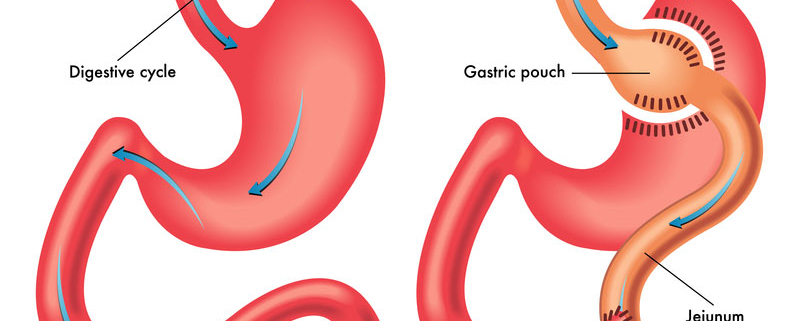Gastric bypass surgery, also known as Roux-en-Y gastric bypass, is a weight-loss surgery that is used to treat obesity. It involves creating a small stomach pouch and rerouting the small intestine to connect to the new pouch, bypassing a portion of the small intestine. This surgery reduces the amount of food a person can eat and absorb, leading to weight loss.
In this blog, we will discuss everything you need to know about gastric bypass surgery, including how it works, who is a good candidate for the surgery, and what the recovery process is like.
How Does Gastric Bypass Surgery Work?
Gastric bypass surgery is a two-step procedure. The first step involves creating a small stomach pouch by stapling the upper part of the stomach. This reduces the size of the stomach to about the size of a walnut, which means that the patient will feel full after eating only a small amount of food.
The second step involves rerouting the small intestine to connect to the new stomach pouch. This bypasses a portion of the small intestine, which means that fewer calories and nutrients are absorbed into the body. The rerouting of the intestine is done by dividing the small intestine and attaching it to the new stomach pouch, creating a “Y” shape.
Who is a Good Candidate for Gastric Bypass Surgery?
Gastric bypass surgery is not a quick fix for weight loss. It is a major surgery that should only be considered after other weight loss methods have failed. Candidates for gastric bypass surgery must have a body mass index (BMI) of 40 or higher, or a BMI of 35 or higher with a weight-related health condition such as diabetes or high blood pressure.
Additionally, candidates must be committed to making lifestyle changes, including eating a healthy diet and exercising regularly. Gastric bypass surgery is not a cure for obesity, and patients must be willing to make permanent changes to their lifestyle in order to maintain their weight loss.
What Are the Benefits of Gastric Bypass Surgery?
Gastric bypass surgery has several benefits beyond weight loss. It has been shown to improve or resolve many weight-related health conditions, including type 2 diabetes, high blood pressure, and sleep apnea. It also reduces the risk of heart disease and stroke.
Additionally, gastric bypass surgery can improve the patient’s quality of life. Many patients report feeling more confident and self-assured after losing weight, which can lead to better relationships and job opportunities.
What Are the Risks of Gastric Bypass Surgery?
As with any surgery, gastric bypass surgery carries risks. Some of the potential risks include bleeding, infection, blood clots, and anesthesia complications. Additionally, there is a risk of complications related to the rerouting of the intestine, including bowel obstruction and dumping syndrome.
Dumping syndrome occurs when food moves too quickly through the digestive system, causing nausea, vomiting, diarrhea, and abdominal cramping. This can be avoided by following a strict diet and eating small, frequent meals.
What is the Recovery Process Like?
The recovery process after gastric bypass surgery can vary depending on the individual patient and the type of surgery performed. In general, patients can expect to spend two to four days in the hospital after surgery.
During this time, the patient will be monitored closely to ensure that there are no complications. Pain medication will be provided to manage any discomfort. Once the patient is able to tolerate liquids, they will be discharged from the hospital.
The first few weeks after surgery are critical for the patient’s recovery. The patient will need to follow a strict liquid diet for the first week, gradually transitioning to soft foods and then solid foods over the course of several weeks.
The patient will also need to take vitamin and mineral supplements to ensure that they are getting the nutrients they need. Regular follow-up appointments




